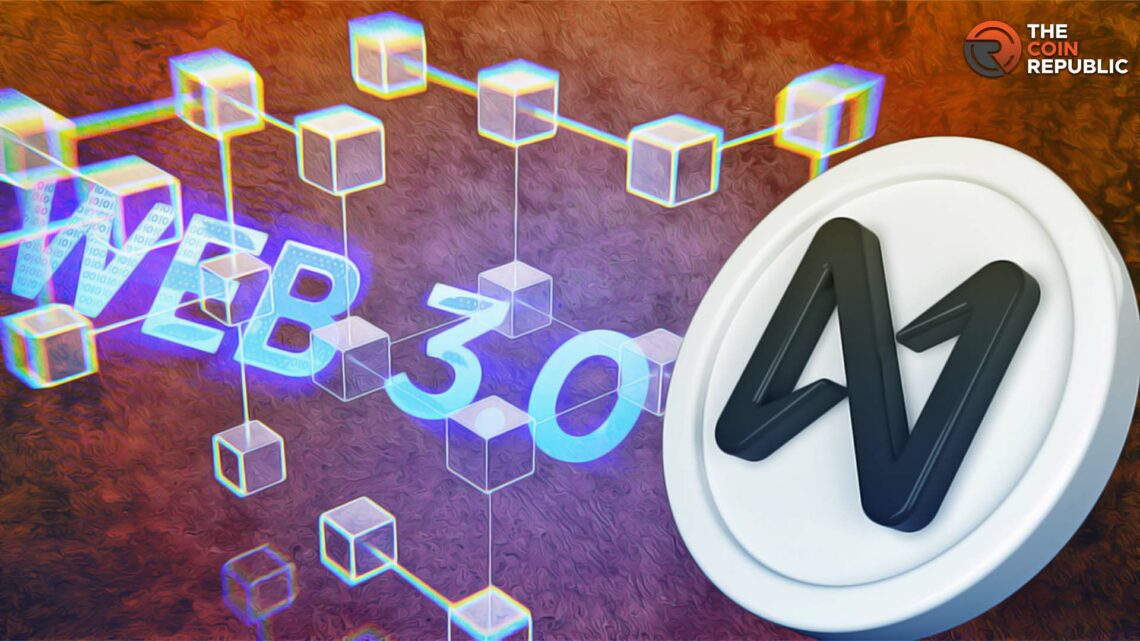- 1 NEAR protocol is an app development platform using innovative techniques to achieve scalability.
- 2 The blockchain operating system of NEAR protocol is an extraordinary approach to make Web3 accessible to all users.
Low throughput, slow transaction speeds, and poor interoperability are the major issues faced by blockchain networks. Fortunately, NEAR protocol is a blockchain platform designed to eliminate these limitations. Its network serves as an ideal environment for its developers to build decentralized applications (dApps). NEAR protocol’s ultimate aim is to simplify and democratize access to the dApps all across the world.
What is the NEAR Protocol?
NEAR protocol is a layer-1 decentralized blockchain network designed as a community-run cloud computing platform. The blockchain was founded by Alexander Skidanov and Illia Polosukhin in July 2018 while its mainnet went live in April 2020.
The major strength of the NEAR protocol has been its ‘usability’ since its inception. On this platform, developers can use familiar programming languages to build a wide range of dApps. Moreover, while developing the apps, they can utilize different widgets and components available on the network and easily enter the blockchain space.
To achieve the goal of becoming a developer and user-friendly platform, this blockchain uses some innovative features. For instance, in contrast to using complex cryptographic addresses like Ethereum, NEAR uses human-readable account names. Moreover, its FastAuth feature allows users to have a seamless web-2 onboarding experience.
Furthermore, it strives to compete with the pioneers of the blockchain space like Ethereum, Polkadot on the front of scalability. Its proposed solution for scalability issues is to use a unique combination of its own Proof-of-stake (PoS) consensus algorithm (Doomslug) and sharding design (NIghtshade). WIth these techniques, NEAR blockchain supports faster (100,000 transactions per second), cheaper (almost zero transaction fee), and energy-efficient transactions.
NEAR blockchain network has its own native cryptocurrency, NEAR. The NEAR tokens are used throughout the platform for the payment of transaction fee and storage. As per the data from CoinMarketCap, the market cap of the NEAR protocol was nearly $1.26 Billion, while its token traded with a price of $1.36 at the time of writing.
NEAR’s Blockchain Operating System (BOS)
With a vision to streamline blockchain technology and to make Web3 accessible to all, NEAR protocol recently launched its blockchain operating system (BOS). Claimed by the protocol as an industry-first, BOS acts as a common layer to browse and discover dApps, including crypto exchanges and non-fungible token (NFT) galleries.
The framework of BOS is compatible with all types of blockchains (currently works with Ethereum Virtual Machine and NEAR blockchain) or Web2 backend. Hence, it allows users to feel as if they are using a single app, while seamlessly switching between dApps created by different developers or on different blockchains.
It is worth noting the entire ecosystem of dApps on the blockchain landscape is fragmented at best. Novice, and in some cases, experienced users have to perform a range of actions to access the experiences provided by the dApps.
BOS addresses this challenge by allowing users, projects, and businesses to build simple interfaces (or gateways) directly on their website. Through BOS, the gateway developer can integrate the clunky world of different dApps into one place.
These interfaces can also be customized by developers with various ‘plug-ins’ to tailor them for specific use cases. Moreover, the gateways also incentivize the users to onboard the ecosystem by hiding the complexities of the blockchain underneath their surface.
Another important feature of BOS is it increases the reach of the users to various dApps with a single entry point. With this, developers can deploy their apps on any type of blockchain and have them accessed by users everywhere, regardless of their familiarity with Web3 and crypto space.
One of the most potential use cases of BOS is steam on-chain gaming. With this BOS gateway, users can access any Web3 game built on NEAR, Solana, and Ethereum. With a prepaid payment system, users can visit the game-item marketplace situated inside the gateway and even gain access to 50+ games.
Another idea of the BOS is to create a global blockchain account marketplace. In this gateway, users can buy a named ID from any blockchain (e.g., .eth, .near, .sol), and use this account ID in any blockchain system from this single domain.
In conclusion, the NEAR protocol is a fast, secure, scalable, and carbon-neutral network that allows app development. With its innovative BOS, NEAR protocol simplifies user and developer experience in the Web3 ecosystem. Using the NEAR protocol as a single entry point, now anyone can access dApps developed on different blockchains at one place. Hence, it is safe to say the NEAR protocol is making Web3 sustainable and accessible to everyone.

Nancy J. Allen is a crypto enthusiast, with a major in macroeconomics and minor in business statistics. She believes that cryptocurrencies inspire people to be their own banks, and step aside from traditional monetary exchange systems. She is also intrigued by blockchain technology and its functioning. She frequently researches, and posts content on the top altcoins, their theoretical working principles and technical price predictions.


 Home
Home News
News







